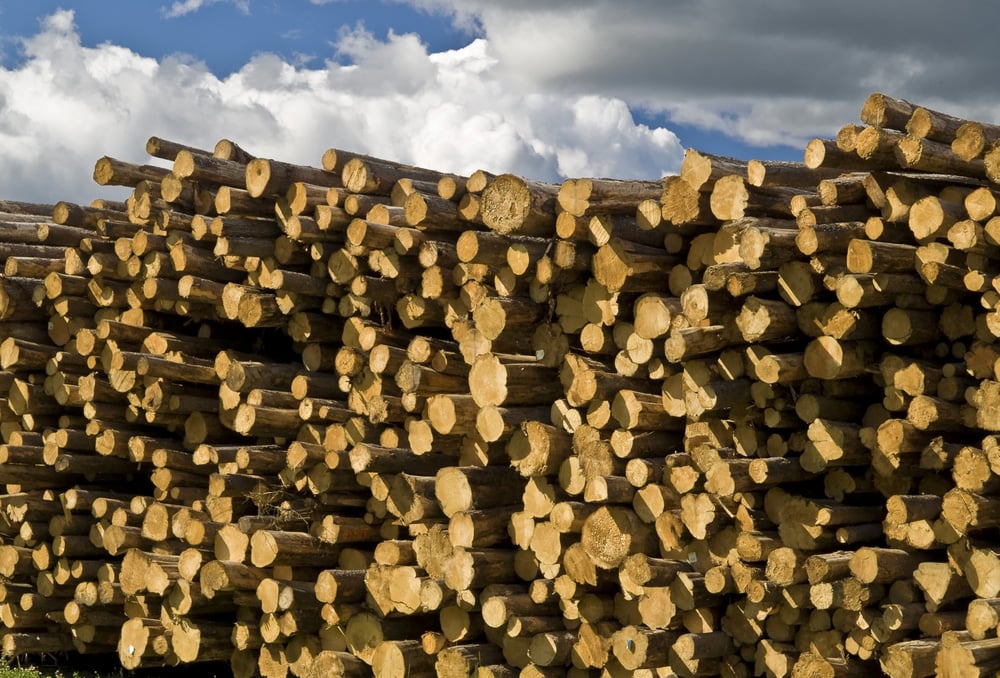The way long-time conservationist Vicky Husband sees it, American negotiators working on a new softwood lumber agreement with Canada are right to complain that the logging industry is subsidized in British Columbia.
“They’re absolutely right,” Husband said in a phone interview.
B.C. is responsible for about half of Canada’s production of softwood, which includes spruce, pine, fir, hemlock, cedar and other trees.
Lack of government oversight, allowing excessive cutting and charging low stumpage fees for logging trees on public land in the province all amount to subsidies, Husband said.
For example, she said, the company logging East Creek on northern Vancouver Island pays as little as 27 cents in stumpage to the government for a cubic metre of timber, an amount of wood similar to the size of a telephone pole.
“The state of forestry is very poorly managed,” Husband said, adding the industry generally gets what it wants in the province. “They are getting away with murder. I know that.”
‘Trade distortions’
Husband’s critique is echoed by the U.S. Lumber Coalition, an industry group that wants a new agreement to limit competition from Canadian wood in the U.S. market.
A previous agreement signed in 2006 expired in 2015 and a “standstill” period during which the coalition agreed not to file complaints under U.S. trade law ended on Oct. 12.
In a June press release, the coalition called on the American and Canadian governments to design “an effective framework for offsetting trade distortions and job losses in the U.S. market caused by unfairly priced Canadian imports.”
Recent materials from the coalition offer little explanation of why it thinks the price on Canadian imports is unfair, and executive director Zoltan van Heyningen didn’t return The Tyee’s call.
Slides from a presentation that van Heyningen and a colleague gave in 2013 at the University of British Columbia, however, provide more detail.
At root, the 26-page presentation makes clear, are concerns that the way B.C. puts a price on logs results in stumpage fees that are too low. When logs are auctioned, a small number of sawmills are buying from a very limited number of companies that hold forest tenures, resulting in prices that are lower than they otherwise would be, the U.S. industry group maintains.
Meanwhile the provincial forest ministry, the presentation said, was not collecting enough in stumpage fees to invest in the public forests, including the funds needed to replant areas where fires or mountain pine beetles had killed trees. Ministry compliance and enforcement inspections had also dropped sharply, from about 30,000 in 2000 to less than a third of that by 2012.
One of the solutions, the coalition concluded, was to “increase public awareness of revenue and environmental costs of [the] current system” in B.C.
Old arguments, says analyst
“The subsidization argument is something the U.S. industry uses as an argument to gain a competitive advantage over Canadian exporters,” said Naomi Christensen, a policy analyst with the Canada West Foundation. “I would argue, and Canada argues, that is not correct. Our lumber is not subsidized.”
There are differences between how logs tend to be grown and sold in the two countries, she said. In the U.S., most timber is grown on private lands and sold at auctions. In B.C. the majority of forests are on publicly owned Crown land, and the ministry sets the price of trees through the stumpage system.
Since 2006, B.C. has made major changes to its stumpage system, but the Americans haven’t acknowledged those changes or ones made in Quebec, Christensen said.
Many factors have changed, but the negotiators for the United States continue to use arguments from the 1980s, she said.
A new agreement will provide the industry with predictability, she said. “Ideally we’d have free trade, but this is a dispute that’s gone on for centuries.”
The Tyee requested an interview with Susan Yurkovich, president of the B.C. Lumber Trade Council, an industry group, but did not hear back.
Opportunity to reassess: Green
B.C. politicians have tended to take the position that what’s best for the industry — as free access to the U.S. market as possible — is best for the province.
Premier Christy Clark has said a new softwood lumber agreement is a top priority and she wanted the two sides to reach a deal before the end of the summer.
The BC NDP in October criticized Clark for not doing more to reach a new deal before the agreement expired.
Dan Hines, the Green Party’s candidate in Kamloops-North Thompson and recently appointed forestry critic, said an extended trade battle over softwood would be expensive for governments and disruptive for the industry and workers in B.C.
But it’s tough to argue with the main U.S. argument that Canadian companies aren’t paying fair value for access to timber, Hines said. “I think that’s a fair argument,” he said. “It’s been a long legacy of giving our resources at lower than the market value they have, or the true value.”
After 2001, the provincial government gave much of the responsibility for managing B.C.’s forests to the industry, he said. “The big problem is we really don’t have anyone doing proper oversight on the cuts or the scaling.”
And fundamental questions about who owns the resource and who benefits from it need to be answered, he said, noting the government should encourage community forests and First Nations’ involvement. There should also be emphasis on managing the forest for long-term and environmental values, he said.
“There’s a lot to be said for smaller organizations that are more community-oriented,” he said.
The dispute over softwood may be the impetus to have that broader discussion, Hines said. “It is a really good opportunity for us to take a look at where this is coming from, what is the value of our resources, what’s the environmental sustainability of how we’re managing the land.” ![]()
Read more: Local Economy, BC Politics

















Tyee Commenting Guidelines
Comments that violate guidelines risk being deleted, and violations may result in a temporary or permanent user ban. Maintain the spirit of good conversation to stay in the discussion.
*Please note The Tyee is not a forum for spreading misinformation about COVID-19, denying its existence or minimizing its risk to public health.
Do:
Do not: